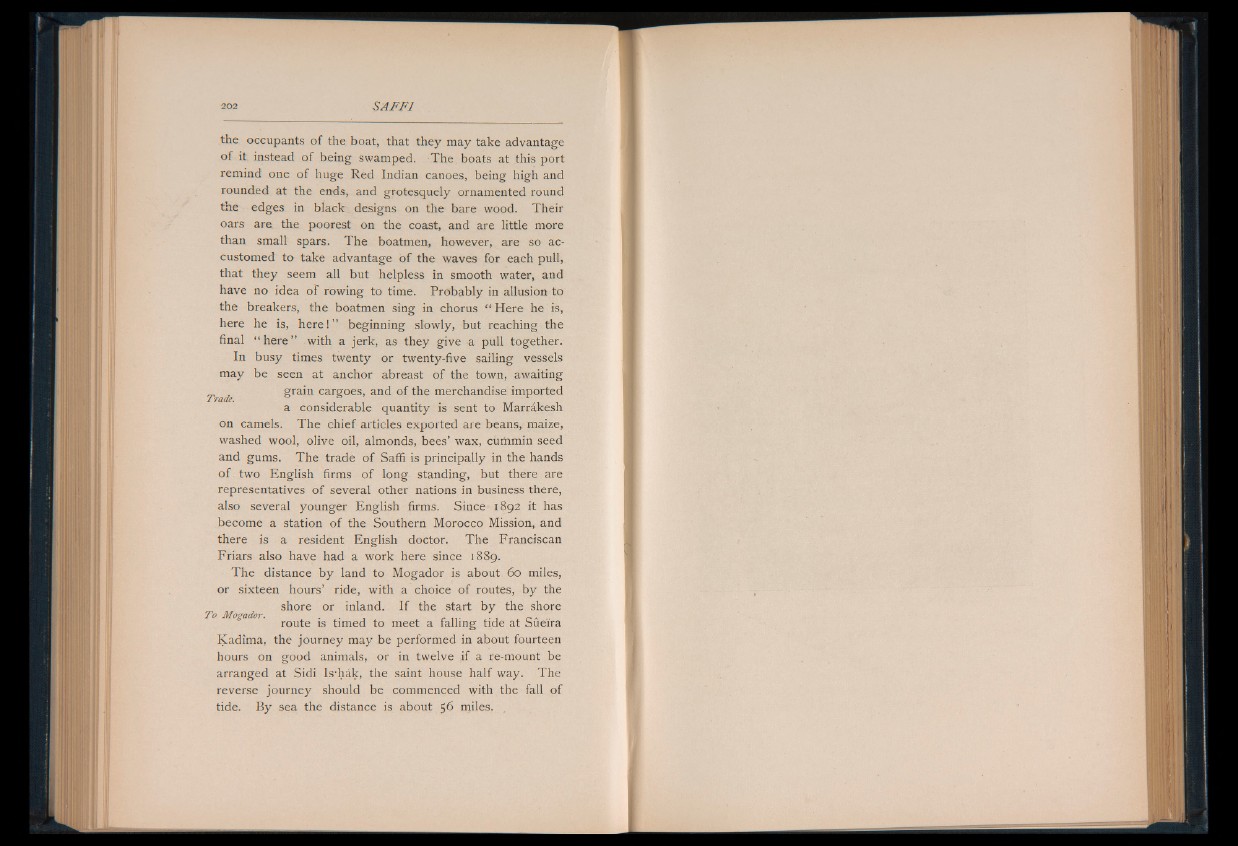
the occupants of the boat, that they may take advantage
of it instead of being swamped. The boats at this port
remind one of huge Red Indian canoes, being high and
rounded at the ends, and grotesquely ornamented round
the edges in biack designs on the bare wood. Their
oars are the poorest on the coast, and are little more
than small spars. The boatmen, however, are so accustomed
to take advantage o f the waves for each pull,
that they seem all but helpless in smooth water, and
have no idea o f rowing to time. Probably in allusion to
the breakers, the boatmen sing in chorus “ Here he is,
here he is, here I ” beginning slowly, but reaching the
final “ here” with a jerk, as they give -a pull together.
In busy times twenty or twenty-five sailing vessels
may be seen at anchor abreast of the town, awaiting
grain cargoes, and of the merchandise imported
a considerable quantity is sent to Marrakesh
on camels. The chief articles exported are beans, maize,
washed wool, olive oil, almonds, bees’ wax, cummin seed
and gums. The trade of Saffi is principally in the hands
o f two English firms of long standing, but there are
representatives of several other nations in business there,
also several younger English firms. Since 1892 it has
become a station of the Southern Morocco Mission, and
there is a resident English doctor. The Franciscan
Friars also have had a work here since 1889.
The distance by land to Mogador is about 60 miles,
or sixteen hours’ ride, with a choice of routes, by the
shore or inland. If the start by the shore
7 Mogador. r . „ A ..
route is timed to meet a lalling tide at bueira
Kadima, the journey may be performed in about fourteen
hours on good animals, or in twelve if a re-mount be
arranged at Sidi Is’hak, the saint house half way. The
reverse journey should be commenced with the fall of
tide. By sea the distance is about 56 miles.